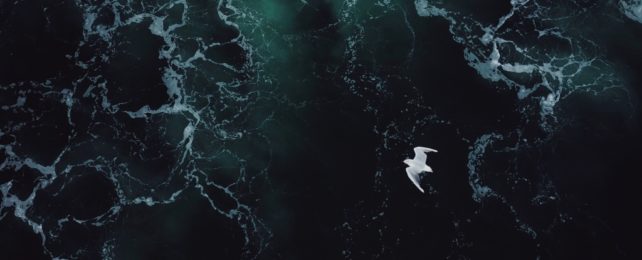The Hikurangi subduction zone is the largest fault in the vicinity of New Zealand, capable of creating 'megathrust' earthquakes that typically rumble at magnitudes 8 and above. New research shows tiny, ancient marine organisms could have a major impact on the next seismic event there.
Researchers studying the region have found that calcite deposits left behind by masses of single-celled marine organisms tens of millions of years ago can control the level of movement and friction between the Pacific plate and the Australia plate.
The key is whether or not this calcite is able to dissolve, the researchers explain. If it does, like a sugar cube in tea, the plates can slide past each other more easily; if it doesn't, that blocks the plate movement, locking up energy that will later be released in a sudden burst.
"Calcite dissolves faster when it's highly stressed and when temperatures are cooler," says structural geologist Carolyn Boulton, from Te Herenga Waka – Victoria University of Wellington in New Zealand.
"It dissolves more easily at low temperatures – say, room temperature. But it gets harder to dissolve as temperature goes up – say, deeper in the Earth."
Down in the depths of the subduction zone, the temperature increases gradually with depth, warming by around 10º C for every kilometer. Calcite shells that fail to dissolve far beneath the surface could have a significant effect on the fault's movements.
The fault itself is difficult to get to and requires expensive drilling equipment to access, so the researchers have been using the exposed layers of limestone, mudstone and siltstone on a local shoreline – south-east of Martinborough, on the North Island – as a proxy.

The rocks there contain calcite from marine organisms that are mainly of a type known as foraminifera (including plankton, among others). The next questions are how much of this calcite lies in the subduction zone, and what state it's in.
"The amount and behavior of calcite from these organisms is a big piece of the puzzle of how large the next earthquake might be," says Boulton.
Geologists know less about the Hikurangi subduction zone than other faults in New Zealand because it can't be examined up close. The record of previous quakes isn't quite as comprehensive, and the knowledge of its condition isn't as thorough, which makes it harder to predict the next big quake.
The researchers say there's a 26 percent chance of a large earthquake in the next 50 years along this fault, one which could generate a large tsunami (there's evidence for previous ones all along the New Zealand coast).
All kinds of factors are at play, but the study shows how plate movements can be slow and slight, or quick and large – and the more we know about the build-up of calcites underwater, the better we'll be able to figure out what's coming next.
"Just think, these tiny, long-dead organisms can affect how two huge tectonic plates interact mechanically," says Boulton.
The research has been published in Lithos.
